Hawthorn (fruit): properties and uses
Since ancient times, people have used the healing power of the plant. Bright red fruits hawthorn, which have truly wonderful healing properties, are popular today, both among the luminaries of medicine and among supporters of non-traditional methods, because delicious berries carry healing from numerous diseases.
Content:
- Features of a medicinal plant
- Composition and useful properties of fruits
- Application in medicine
- Harm and contraindications
- Procurement and storage
Features of a medicinal plant
Common hawthorn is a plant whose lifespan is surprisingly long: it reaches three hundred years or more. The wood has a hard-to-touch wood, which allows it to withstand strong temperature fluctuations. Shoots are strewn with thorns. During flowering, the plant is densely covered with white or white-pink buds.
The fruits are fleshy, elongated, mostly red in color, but also purple, black, orange.
There are a great many subspecies of hawthorn. For the most part, the place of growth is the middle lane, but also in the subtropics and in cold regions you can find plant varieties that have adapted to harsh conditions. With the arrival of winter, the shoots gradually lose their foliage.
Main habitats:
- edges
- ravines
- undergrowth
- mountain slopes
- river banks
Scientists from most countries in the world use hawthorn for medical purposes. Many plant varieties are officially recognized, these subspecies are actively used by traditional healers.
There are countless types of hawthorn, up to 1500. On the territory of the Russian Federation, you can find up to 40 subspecies of the plant. The most useful of them is the blood-red hawthorn, rightly occupying a leading position in medicine. For medicinal purposes, flowers, hawthorn bark are used, but berries are especially useful, sweet and pleasant to the taste, they are a storehouse of substances useful for the body.
Composition and useful properties of fruits
The healing properties of the plant are due to the special composition of its berries, flowers and leaves:
- fruits contain a lot of essential oils, flavonoids, starch, vitamins (A, C, E)
- a lot of fatty oils in the bones are used with success in the treatment of disinfection
- a source of acids and essential extracts - flowers
Organic acids, tannins in the composition make it indispensable in the prevention and treatment of many diseases.
Application in medicine
The most popular in medicine is blood red hawthorn, the plant is used in the treatment of many diseases:
- is a generally recognized means of preventing strokes
- berries contain large reserves of ursular acid, which enhances the blood circulation in the vessels of the heart and brain
- it is used as a means of promoting the removal of excess bile from the body
- helps in the fight against cholecystitis
- improves metabolic processes
- contributes to the normalization of body weight (pectins in berries help to activate metabolic processes in the body)
Experts recommend using hawthorn for such unpleasant phenomena as:
- the occurrence of edema
- allergic reactions
- rheumatoid arthritis
- migraines, dizziness
- sleep disturbances
- reduced immunity
- diseases of the heart muscle and malfunctions
- increased nervous irritability
- depressive conditions, stress
- epileptic seizures
- hysteria
- irritability
- hypertension (as a means of normalizing blood pressure)
- diabetes mellitus (normalizes blood sugar)
- atherosclerotic manifestations (destroys cholesterol plaques and prevents their occurrence)
In addition, hawthorn fruits are used to make delicious compotes, mousses, preserves, jams, and preserves - an appetizing medicine that helps to increase immunity.
Harm and contraindications
Like any drug, hawthorn, in addition to its benefits, can cause significant harm to the body. This will happen if the medicine is used uncontrollably, without following any treatment regimen, in high dosages.
In such cases, the following unpleasant symptoms may occur:
- Malfunctions of the gastrointestinal tract.
- Reduced blood pressure
- Renal dysfunction.
- Arrhythmias of the heart.
Before use, you should visit a doctor and carefully read the instructions for use of the drug. For women during pregnancy and lactation, use only on the recommendation of a doctor!
Procurement and storage
The plant blooms profusely, but not for long (about four days) Before starting harvesting, you need to make sure that it is completely healthy. The flowering period begins in late spring (early summer) and at the same time you can already start harvesting the hawthorn.
Dry weather (towards the end of October) is best suited for harvesting. The fact that the berries are ripe is determined by their color: deep red. There are much less nutrients in the leaves of the plant, however, they are also used in the preparation.
The following methods are used in the workpiece:
- Drying.
- Freezing.
Before drying, you must:
- rinse it thoroughly from dirt
- spread out on prepared parchment
- dry for several days, turning over from time to time
If the harvesting takes place in special dryers, then the temperature in them should be no higher than 60 degrees. You can also dry in the oven, with the door open, maintaining the temperature at forty degrees. Another, the most common drying method: simply spread out on a surface protected from the sun with good air access until it dries completely. You can determine if the hawthorn is completely dry by squeezing a handful of fruits in your hand. Ready berries are easily separated from each other, have a slight bitterness and a specific smell.
When dry, the hawthorn should be placed in cloth bags, wooden boxes lined with parchment, foil or glassware and thus stored. It is necessary to reach it with a dry hand to avoid moisture penetration. The shelf life is no more than 2 years.
Some berry lovers store them in blanks:
- juices
- jam
- jam
- jelly
- tincture
Tincture preparation:
- pour boiling water over the dried flowers (one to one)
- insist half an hour
- strain and roll into glass jars
More information can be found in the video:
Juicing:
- Wash 1000g of fruits thoroughly, cook for 2 hours in a little water
- grind through a sieve, add 0.5 kg of sugar, a liter of water
- boil
- remove from heat
- pour into glass jars, roll up
Jam making:
- 1000 g of fruit pour 1 tbsp. water
- add 0.5 kg of sugar
- cook until thick
- cool, roll up in prepared jars
Compote is the most difficult to prepare:
- clear berries from seeds
- pour over 30% sugar syrup
- insist at least 10 hours
- drain the infusion
- boil
- soak the berries and place them on the bottom of sterilized glass jars
- pour the resulting infusion
- roll up
Subject to the necessary rules, frozen hawthorn fruits do not lose their healing properties at all. Freeze the product quickly, tightly packed in containers, in the freezer.
In addition, a good way: scroll the fruits with a meat grinder or grind in a blender, and then put the resulting mass in cellophane or containers and freeze them. In this case, small portions are better - this factor affects the preservation of vitamins.
A frozen product can be used for the same purposes as a dried product:
- in the preparation of a variety of teas and medicinal infusions
- as a component or main component of fruit drinks, compotes
- as a dietary supplement, in various food variations
Hawthorn - a natural natural remedy, this is its main advantage in comparison with chemical analogues. However, this plant can have a strong effect on the body, so you should not use it yourself, without the supervision of your doctor.



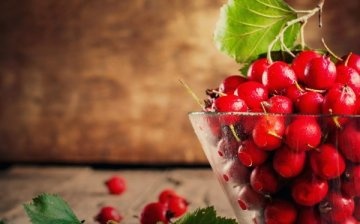

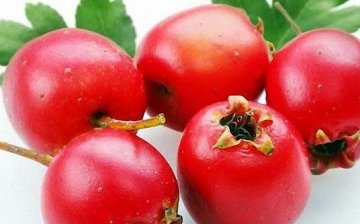

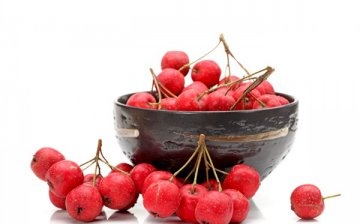
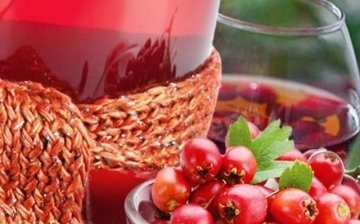
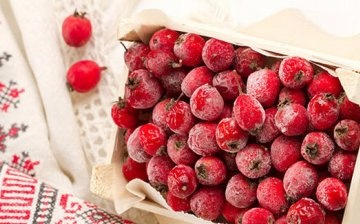







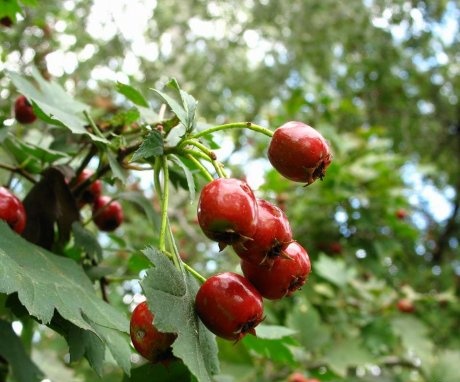
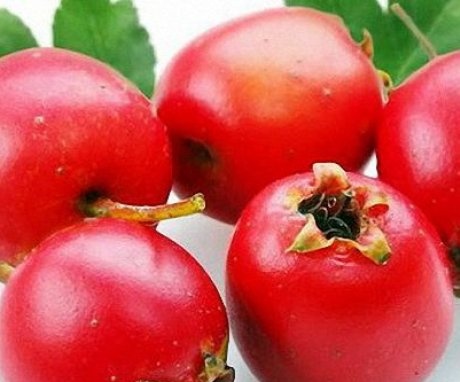
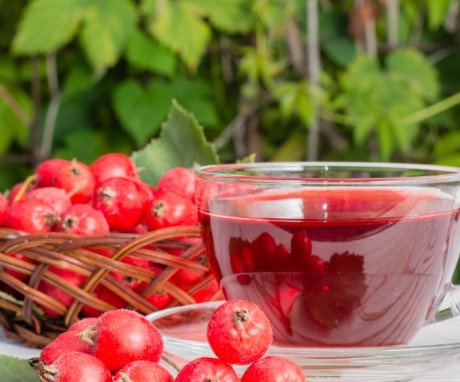
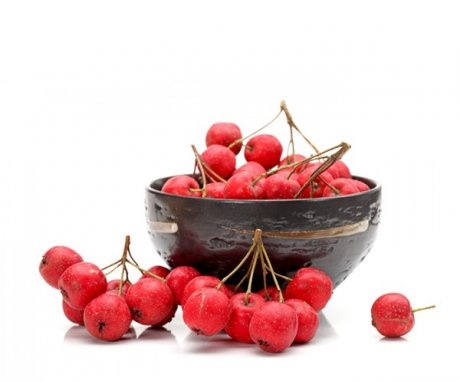
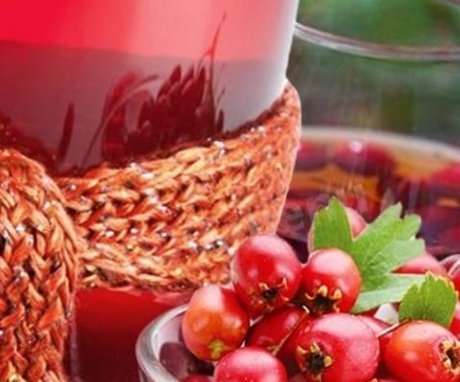
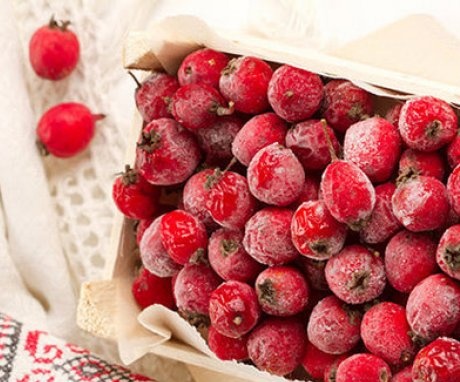
We have hawthorn and rose hips growing on the site as a hedge. Every year I harvest berries, dry them in the oven as stated in the article, and in winter and spring I make vitamin-medicinal infusions.